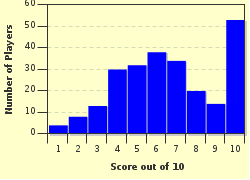Quiz Answer Key and Fun Facts
1. What are four different names that a male deer can be known as?
2. On which continent couldn't you find a deer, until they were introduced there in the 19th century?
3. With most species of deer you can tell a buck from a doe by the antlers. For which species would it take closer inspection to determine gender, since both bucks and does have antlers?
4. What time of year are bucks most likely to use their antlers for fighting?
5. Some red deer stags do not grow antlers. What are these non-antlered deer known as?
6. In which species of deer do the bucks have enlarged upper canine teeth but do not grow antlers?
7. Where on male deer are the glands which they use to mark their territory?
8. Deer have molars, pre-molars, canine, and incisor teeth in the bottom of their mouths. Excluding the canine teeth a few species of deer have, what replaces the canine and incisor teeth in the upper portion of a deer's mouth?
9. There is a Cherokee Indian legend surrounding how the teeth of deer formed. Which other animal is said to have caused deer teeth to be blunt, as revenge for the deer having won antlers?
10. Which of the following statements is true?
Source: Author
BxBarracuda
This quiz was reviewed by FunTrivia editor
crisw before going online.
Any errors found in FunTrivia content are routinely corrected through our feedback system.


